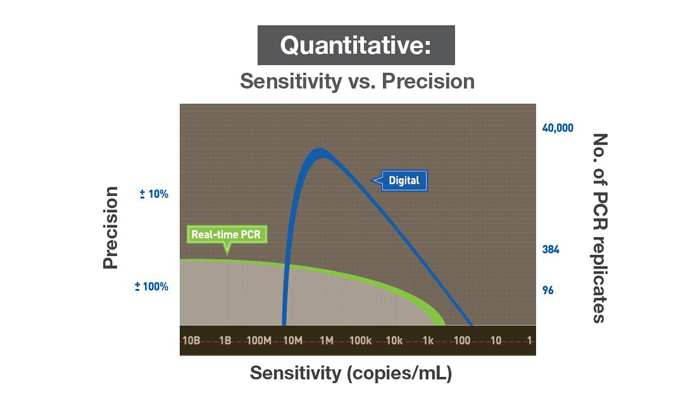Should You Use Digital or Real-Time PCR?


Overview
Absolute measurement: Uses single-molecule amplification to count the target of interest across a large number of PCR replicates; use limiting dilution to ensure at least one reaction does not contain the target.

Overview
Uses a reference to measure PCR amplification as it occurs; data collected during the exponential (log) phase of PCR.

Applications
- Rare target detection
- Absolute quantitation of gene expression
- Absolute quantitation of viral load
- Absolute quantitation of nucleic acid
- References and standards
Applications
- SNP genotyping
- Relative gene expression analysis
- MicroRNA analysis
- Standard copy number variation
Advantages
- No need for references or standards
- Increased performance by increasing total number of PCR replicates
- Highly inhibitor-tolerant
- Can analyze rare targets against wild-type background
- Provides linear response to the number of copies; allows for small fold-change differences to be detected
Advantages
- Broadly accepted, well-established protocols and assays
- Dynamic range of detection
- Detection down to a two-fold change
- High sample throughput, lower cost
- Data collected during the exponential phase of PCR; provides a permanent record of amplicon amplification with the cleaved probe